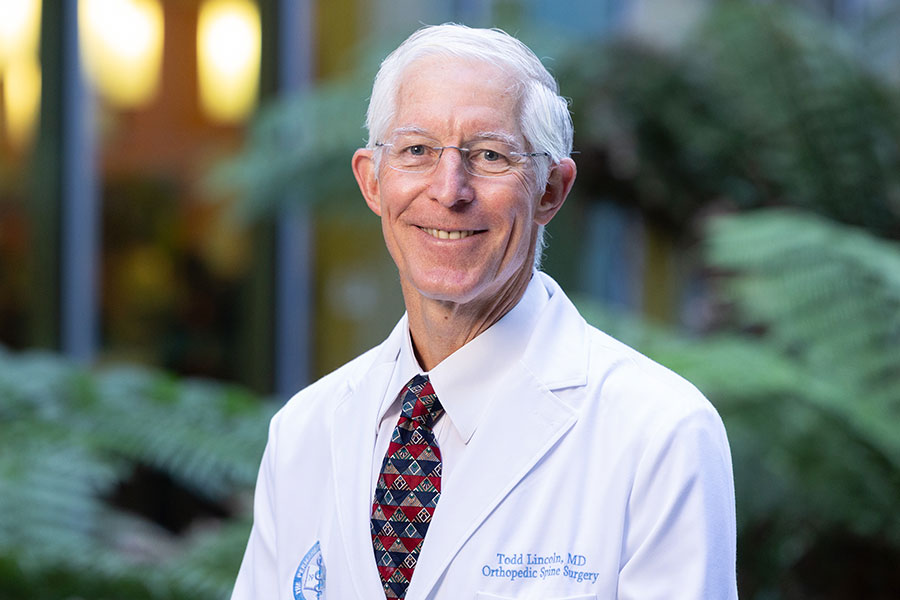It started as a little tremor in her left little finger, but before it was done, Darcy Blake experienced full-blown Parkinson’s disease, helped innovate a world-wide support system for women with Parkinson’s, and went through a high-tech, high-precision medical procedure at Kaiser Permanente in Redwood City that changed her life.
“I’m thrilled,” said Blake, Communications Director at Menlo College. “The medical team at Redwood City has given me a new life.”
Blake, in her sun-drenched office at the College, is tremor-free after undergoing a relatively new surgical procedure called “Deep Brain Stimulation” (DBS), which involves delicately placing tiny electrodes directly into the brain, and connecting them to an implanted device similar to a pacemaker.
“The doctors drill a hole into your skull to access the brain and that may frighten people,” says Blake, “but there was plenty of anesthesia for the drilling and no pain for the entire procedure.”
Blake has even posted a very short “before-and-after” video on YouTube, showing her tremor disappear after DBS.
“Darcy was an ideal patient: well-read, insightful, and courageous,” says Dr. Mark Sedrak, Director of Functional Neurosurgery at Kaiser Permanente, and Darcy’s surgeon at the KP Redwood City Hospital. Dr Sedrak is a youthful neurosurgeon with dark hair and steady hands. Diplomas and a smiling wide-eyed photo of his young son grace the wall of his office.
For 17 years, Redwood City has been a Kaiser Permanente regional center for neuroscience and neurosurgery. Dr. Sedrak has done perhaps 250 of the 500 Deep Brain Stimulation procedures at the medical center, which started when Dr. Gary Heit, a Stanford neurosurgeon moved to Kaiser Permanente.
“Dr. Heit had perfected an ultra-high-precision technique for the surgery,” says Dr. Sedrak. “Thanks to him and his technique, our DBS is unique in the world. Our program also uniquely utilizes advanced planning information before surgery, something called diffusion tensor imaging”, which gives patient specific information about targets, more useful than standard MRI’s.
Each surgery is a nearly-day-long procedure in a special operating room designed for what’s called “stereotactic surgery.” It involves multiple imagings of the brain and a 3-D geographic mapping of areas that control the muscles. It is thought that Parkinson’s disease is a failure of the brain’s feedback mechanisms between nerves and muscles that allow the tremors.
The Dr. Heit technique allows surgeons to see, in real time, interior portions of the brain during the surgery. And for safety, the entire procedure has double and triple backups.
“At first, we are threading electrodes, finer than a human hair, into the brain control areas,” says Dr. Sedrak. “Then we actually listen to changes in the neuron’s electrical signals when we move a patient’s limb.”
“I wasn’t totally asleep in the operating room,” remembers Blake, “and I do remember that Dr. Sedrak moved my leg during the surgery.”
Aside from her shaking left hand, Blake’s left leg had become dystonic, where sustained muscle contractions caused it to sometimes drag as she walked.
Dr. Sedrak continued: “After we pinpoint these control areas, we implant a special electrode that stays in the brain and is connected to a kind of electronic pacemaker.”
The pacemaker-like device is programmed to deliver arrays of tiny electrical jolts to the brain. Each jolt essentially “re-sets” the muscle control area and stops the tremors.
Blake says: “It took several programming sessions to completely eradicate my tremors, but Dr. Sedrak said this is completely normal. I had the faith this would work.”
During the years her Parkinson’s advanced and while she was being evaluated for the DBS, Blake helped develop a website for supporting women with Parkinson’s. There are articles about medical advances and Darcy Blake’s life with, and now without, the symptoms of Parkinson’s disease.
This article by Karl Sonkin was published in the Palo Alto Patch on January 29, 2014.






